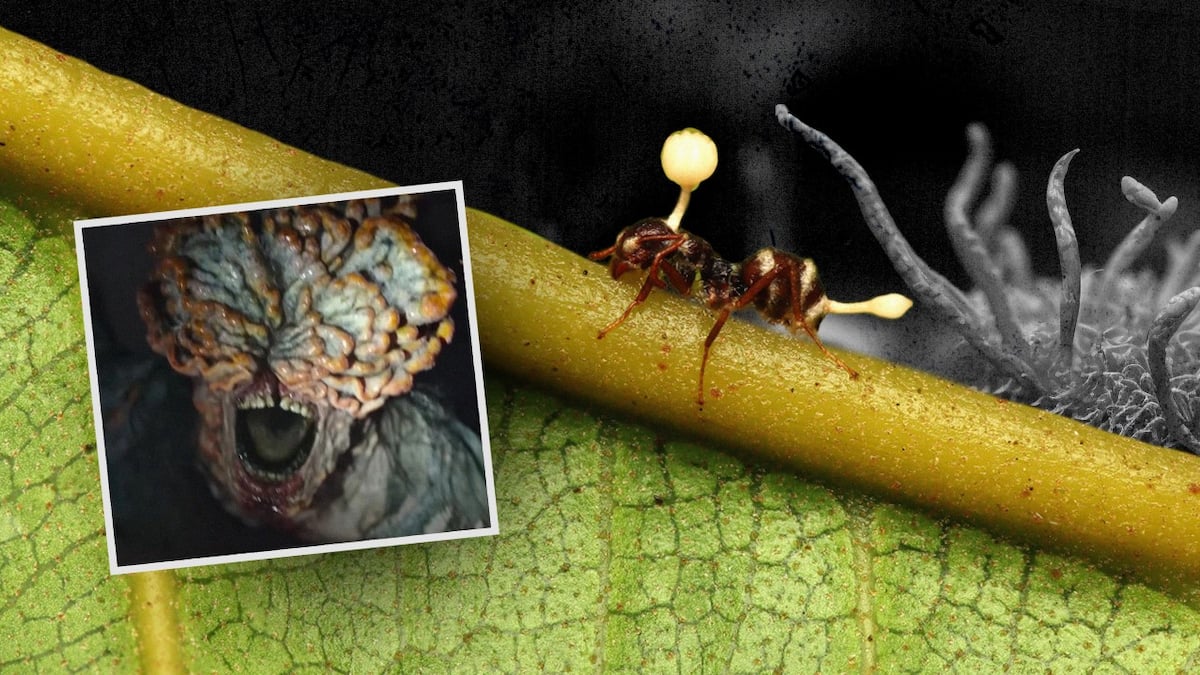A question arises after the last episode of The Last of Us: could a fungus trigger a pandemic as the video game-inspired series of the same name suggests? Although this scenario is unlikely, it is not entirely impossible, argue experts. And if it were to materialize, the world pharmacopoeia is not at all equipped to deal with it.
• Read also: 4 animals turned into zombies by parasites
In the hit HBO series, the apocalypse appears in the form of a fungal pandemic: a fungus belonging to the genus Cordyceps managed to mutate to infect the brains of humans.
Once infected, hosts of this parasite transform into violent, bloodthirsty creatures in just two days. And they are determined to spread the zombifying fungus by biting – or devouring – their prey.
While this particular strain of Cordyceps is fictional, the fungus does exist in the real world. It is even used as a dietary supplement.
However, it only attacks ants and certain insects.
“Cordyceps can cause a change in the behavior of ants and insects, but not complex zombie behavior over a long period of time as seen in the HBO series”, specifies the head of the mycology sector at the National Institute Public Health of Quebec (INSPQ), Philippe Dufresne.
And, unfortunately for the imagination, the infection is not transmitted by bite.
“When the ant breathes in the microscopic spores of the fungus, which are about the size of a needle point – the means of reproduction of a mold – the parasite will have taken over its body about a month later,” explains the president of the Association of Microbiologists of Quebec, Marc Hamilton.
“It infects the motor skills of the ant and not its brain,” he continues. She has all her head, but no longer has control of her movements, which tell her to climb to the top of a branch or a leaf, which is the ideal place for the fungus to reproduce. It eventually comes out of the ant’s body and kills it.”
It’s an episode of the show planet earth broadcast in 2006 on the infection of an ant by one of these fungi, which inspired the creator of the game The Last of UsNeil Druckmann, launched in 2013.
Why is a fungal pandemic unlikely?
The video game proposal is original, admit the experts consulted by 24 hours, considering that in the vast majority of “pandemic” post-apocalyptic works, the end of the world is caused by a virus. Original, therefore, but not necessarily credible.
First, because pathogenic fungi are generally not transmitted from human to human, according to Philippe Dufresne of the INSPQ.
It is possible to contract a fungal infection from the airborne spores.
Others, called dermatophytosis, which cause nail fungus in particular, can be transmitted by contact with an infected person, animal or articles. They live on dead tissues of skin, hair and nails.
However, these infections are unlikely to cause the destruction of civilization. First, because they treat well with an antifungal cream. Then, because the growth of the fungus is slow compared to that of viruses and bacteria.
“The infection takes several months to develop,” says Mr. Dufresne.
“Mushrooms are complex and highly evolved organisms. For this reason, they do not undergo the high rate of mutation necessary to take over the human body,” adds biology professor at the University of Ottawa, Allyson MacLean.
We are therefore far from the ideal scenario for a disaster film, ironically Marc Hamilton of the Association of Microbiologists of Quebec.
“It takes a month for Cordyceps to infect an ant, which is equivalent to a large part of its life. [son espérance de vie varie de quelques semaines et 2 ans], he illustrates. If a fungus were to attack humans, we would have time to find a cure.
Another important factor: the temperature of the human body is too high for a fungus to proliferate there.
“For a fungus to be successful in attacking a human, it must be able to tolerate a temperature of [36,6°C]. But the majority do not survive this temperature. They generally develop between 4°C up to 30 or 31°C”, explains the professor in the Department of Wood and Forest Sciences at Laval University, Louis Bernier.
A pandemic not impossible
“Pathogenic fungi are opportunistic”, mentioned the five specialists interviewed by 24 hours. Some fungi, which have adapted to higher temperatures, are thus able to infect humans, especially people with weakened immune systems.
“A fungal pandemic is a difficult scenario to imagine, except in human populations that would already be in poor health,” argues professor in the Department of Biological Sciences at UQAM, Tatiana Scorza.
“People who are immunosuppressed or already weakened by disease are more prone to contracting fungal infections.”
In September 2022, Quebec experienced its first outbreak of Candida auris, a so-called “killer fungus”, which attacks patients in healthcare settings. An infected person will have a 30 to 60% chance of dying.
“For a pandemic to be caused by a fungus, it would take the perfect storm: a major event that would have killed part of the population and whose survivors would have been left with a weakened immune system,” explains Louis Bernier.
And if, by misfortune, this “perfect storm” occurs, it could be very difficult to resist.
“It’s more difficult to treat fungal infections, because there are fewer differences between humans and fungi, unlike bacteria,” said biologist Allyson MacLean. Like humans and animals, fungi are formed from eukaryotic cells.
The lack of medicine to fight fungal infections could also be an obstacle, warns Professor Bernier.
“There are not a lot of products against human fungal infections and we are seeing more and more resistance. If we began to see more and more epidemics caused by fungi, the current pharmacopoeia is not sufficiently developed to combat them, unlike bacteria or viruses.

